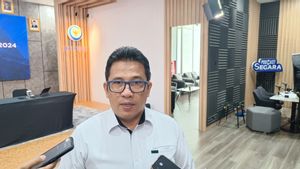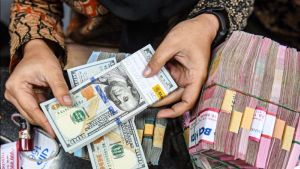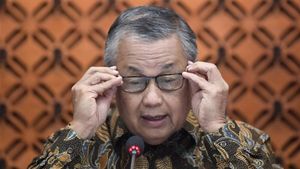JAKARTA - The Financial Services Authority (OJK) has again conducted a National Survey of Financial Literacy and Inclusion (SNLIK) to measure the Indonesian population's literacy and financial inclusion index.
"This is the basis for the future program to increase financial literacy and inclusion. For the first time, SNLIK will be held by the OJK together with the Central Statistics Agency (BPS)," said the Chief Executive of the Behavior Supervisory for Financial, Education and Protection Business Actors of OJK Consumers, Friderica Widyasari Dewi in a press release, quoted from Antara, Saturday, August 3.
He explained that the results of SNLIK 2024 showed that the Indonesian population financial literacy index was 65.43 percent, while the financial inclusion index was 75.02 percent.
The condition of SNLIK 2024 also measures the level of literacy and inclusion of sharia finance. The results obtained show that Indonesia's population Islamic financial literacy index is 39.11 percent. Meanwhile, the Islamic financial inclusion index is 12.88 percent.
The implementation of the SNLIK 2024 field will be carried out from January 9 to February 5, 2024 in 34 provinces covering 120 regencies/cities including 8 OJK office areas (1,080 census blocks). The number of SNLIK samples in 2024 is 10,800 respondents aged between 15 and 79 years.
SNLIK 2024 uses financial literacy parameters consisting of knowledge, skills, beliefs, attitudes, and behavior, while the financial inclusion index uses usage parameters (usage) on financial products and services.
SNLIK 2024 also uses financial literacy parameters consisting of knowledge, skills, beliefs, attitudes, and behavior, while financial inclusion index uses usage parameters (usage) on financial products and services. The use of these parameters is in accordance with the indicators used in the OECD/INFE International Survey of Financial Literacy.
SEE ALSO:
Based on gender, the women's financial literacy index is higher than the male financial literacy index, which is 66.75 percent and 64.14 percent, respectively. The women's financial inclusion index is also higher than the male financial inclusion index, which is 76.08 percent and 73.97 percent, respectively.
Based on village classification, the financial literacy and inclusion index of urban areas was 69.71 percent and 78.41 percent, respectively, higher than in rural areas, namely 59.25 percent and 70.13 percent, respectively.
Meanwhile, based on age, groups 26-35 years, 36-50 years, and 18-25 years have the highest financial literacy index, namely 74.82 percent, 71.72 percent, and 70.19 percent, respectively. On the other hand, the age group is 15-17 years and 51-79 years old has the lowest financial literacy index, which is 51.70 percent and 52.51 percent, respectively.
The English, Chinese, Japanese, Arabic, and French versions are automatically generated by the AI. So there may still be inaccuracies in translating, please always see Indonesian as our main language. (system supported by DigitalSiber.id)
















